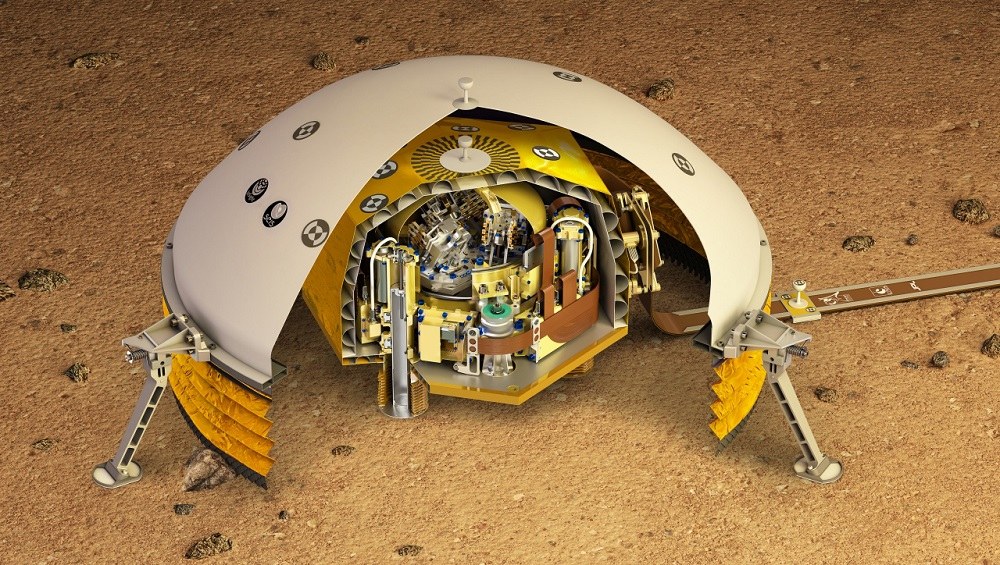Cross-section of the SEIS seismometer
Cross-section of the SEIS seismometer
SEIS is a seismometer for measuring movements in the Martian soil at different frequencies. It contains six seismic and other auxiliary sensors. The instrument was developed and built by the French space agency (CNES) with the participation of the Max Planck Institute for Solar System Research in Göttingen. At the heart of the SEIS experiment are three pendulums that react to even the smallest movements in the Martian surface. The motion of the pendulums is recorded electronically. Because materials expand as they warm and contract when they cool, SEIS is equipped with a sophisticated thermal system in the form of several insulation shells, comparable to the 'onion-skin principle' in modern outdoor clothing. The shells reduce the temperature fluctuations at the sensors so that measuring conditions always remain stable inside the instrument. The outermost white dome serves specifically to protect against the wind; a flexible system resembling a window blind ensures a tight seal at the bottom.

